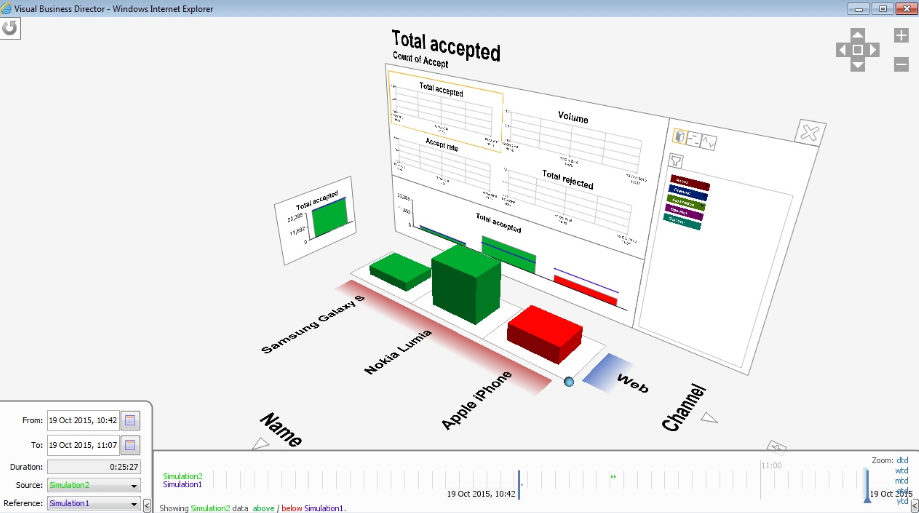
Introducing decisioning simulations
Decisioning simulations
Decisioning simulations enable you to execute a complex or simple decisioning strategy using a large customer sample and then examine the projected level of offer acceptance or rejection across a number of inbound and outbound channels. Using a data transform in the test strategy panel executes a decision per one customer. In contrast, simulations allow you to make millions of simultaneous decisions for large groups of customers. We call this “batch decisioning”.
To execute a decisioning simulation, instead of a single customer profile, we need customer data for a group of customers. In a simulation context, we call this simulation data, or input population. This data can be a real sample of the customer database, or some generated customer data, often making use of a Monte Carlo data set.
In the simulation run, a decision strategy is applied against each customer in the population. The result of the simulation is stored in a database table or in a Visual Business Director (VBD) data source. When stored in a database table, you can analyze the reports using standard Pega Platform reports.
This standard report shows the distribution of available propositions among the population after the strategy has been run for each individual. When the results of a simulation are stored in a VBD data source, the results can also be inspected using Pega’s Visual Business Director, which will show a 3-dimensional view of the same data.
One of the most common use case for decisioning simulations is A/B testing. By completing 2 simulation runs we can generate 2 data sets that can be compared with each other. Testing two strategies against each other is also known as champion-challenger. Basically, you have a champion strategy, which is your default, and you use that in the first simulation. Then you create a challenger strategy, which is run in a second simulation. Decision Management enables you to see the results of each strategy against your population without having to take the strategy into production. This way you can see how the challenger strategy compares to your champion. You can also do a champion-challenger simulation at a very granular level, such as within a specific decision strategy to try out alternative Next-Best-Actions. A/B testing is also known as “what if” testing. What if we used strategy B? How would that impact our business?


